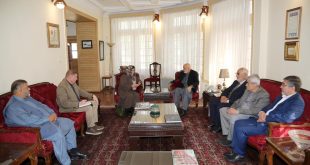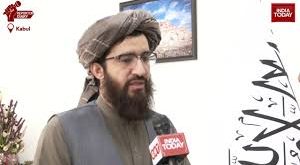By Abdul Saboor Sarir-Pyeongchang, Gangwon province: The Global Saemaul Leadership Forum, an organization active on the rural development was held from October 18 to 20 in South Korea under the theme “SMU-Waves of Hope, Unity of Global Society”. Around 750 participants from 44 countries included ministers and Vice-Ministers, Ambassadors, Saemaul leaders, and representatives of international organizations, and journalists.
On behalf of Afghanistan, minister of rural rehabilitation and development, Nasir Ahmad Durrani participated in the session, in which Afghanistan officially gained the membership of the conventions.
The successful story of Saemaul Undong was introduced as “A New Rural Development Paradigm for the 21st Century” at the UN Sustainable Development Summit. The forum was held to eliminate poverty and promote sustainable development around the world while helping the self-sustainable expansion of Saemaul Undong.
In particular, the number of participants increased by 27 percent from 550 to 700 compared to last year, and it was participated by 10 Ministers and Four Deputy Ministers which shows the globalization trend to Saemaul Undong.
At this year’s Forum in particular, best practices of Saemaul Undong was shared to help voluntary promotion of Saemaul Undong, which was recognized as the “New rural development paradigm of the 21th Century” at the UN Development Summit last year. It also aimed to help eradicate poverty and suitable development.
The most distinguished outcome of the Forum was the establishment of Saemaul Undong Global League, a network between Saemaul Undong organizations all over the globe. By encouraging voluntary dissemination of Saemaul Undong, a new paradigm of Saemaul Undong was suggested.
The Saemaul Global League will help discover successful stories to share and raise villagers’ competencies, and help carry out localized Saemaul Undong with or without the donors help.
Particularly, the Kiboha village in Uganda and Tam Ngan village in Vietnam, which were selected as great exemplars of Saemaul Undong this year, have proposed in which direction Saemaul Undong should step forward.
Kiboha village voluntarily established its own Saemaul community without any financial support from the government. Funded by donations and profitable businesses, Kiboha village proposed a new direction for Saemaul Undong.
In TamNgan village, private, business participated in Saemaul ODA projects to help build a value chain of production-manufacturing-sales, which can be seen as a great success story of Saemaul Undong.
At the high-level roundtable participated by 15 Ministers and Vice Ministers, discussions took place on the role of the government to make Saemaul Undong a sustainable development model, and on localization strategy considering each country’s own characteristics, and establishing public and private cooperative governance.
In addition, 9 bilateral meetings took place for the dissemination and cooperation of Saemaul Undong, among two of which signed a MoU on Saemaul Undong cooperation.
The Korean government will continue to put its utmost efforts to ensure that Saemaul Undong can become a comprehensive and sustainable global movement that is tailored to each countries’ circumstances and times. It also plans to introduce SMU Index that analyses the recipient countries’ demand, environment, and potential to make synthetic estimation of the conditions for Saemaul Undong implementation.
It also aims to develop standardized Saemaul Undong education that can provide a consistent and informative curriculum to be utilized in any institutions to disseminate SaemaulUndong’s principles of “diligence, self-help, and cooperation”.
Durrani met South Korea’s interior minister at the sideline of the convention session, discussing the implementation of the Saemaul Undong program, technical assistance, the Saemaul Undong experts’ visit to Afghanistan and research on empowerment of the Afghan rural development institute.
South Korean interior minister vowed to help Afghanistan in the mentioned affairs.
The new movement on the rural areas began in 1970 in South Korea. People played basic role in development of Korea’s rural areas and quickly shortened distance between cities and villages. Then, a number of Asian and African countries used the movement as an inspiration with the help of the Saemaul Undong. The new movement for the rural areas stands on three bases: strong intention and national perception, the perception of cooperation with other people, responsibility and ownership perception in the implementation of projects.
The session discussed rural development and the new rural movement. The ministry of rural rehabilitation and development is to gradually introduce the new movement model in Afghan rural areas.
 Afghanistan Times
Afghanistan Times




